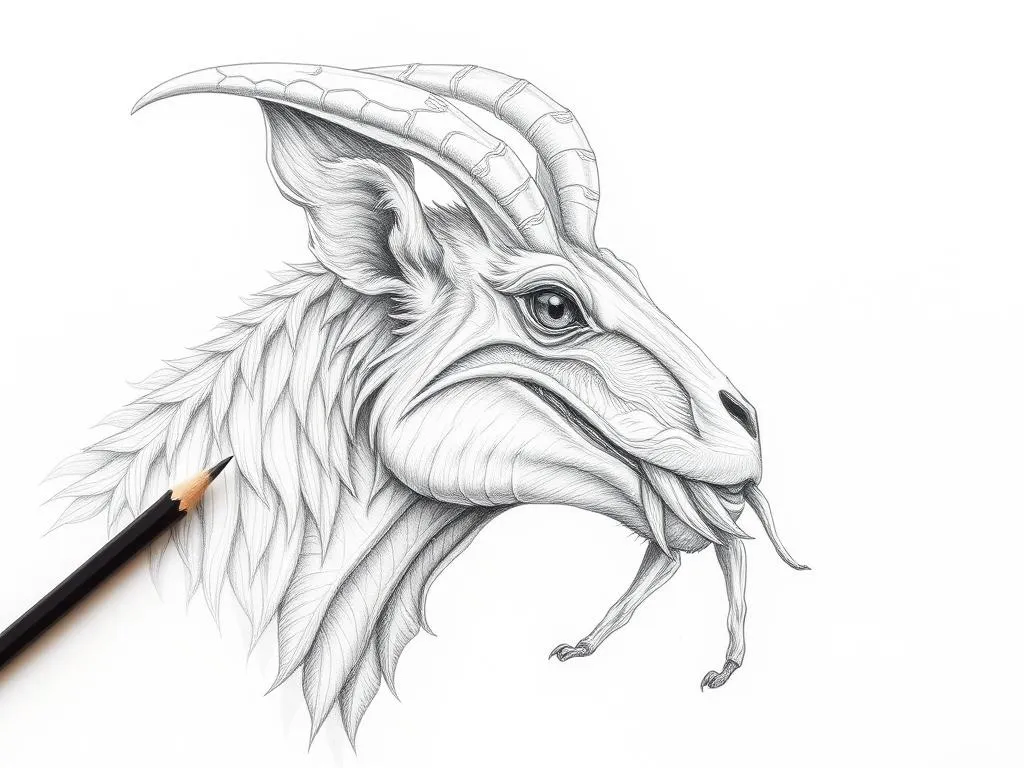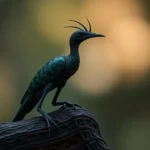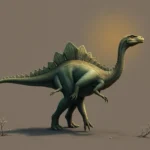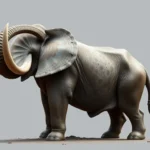The Symbolism of Eryops: A Prehistoric Connection
Disclaimer: Some images on this website are AI-generated artworks and may not accurately represent real animals.
Understanding Eryops
A Brief Overview of Eryops
Eryops is an intriguing prehistoric amphibian that roamed the earth during the early Permian period, approximately 295 million years ago. As one of the earliest known amphibians, Eryops plays a crucial role in understanding the transition from aquatic to terrestrial life. This unique creature has become a focal point of study for paleontologists and enthusiasts alike, offering insights into the evolutionary journey of vertebrates.
Physically, Eryops was a robust amphibian, characterized by its large, flattened skull and long, muscular body. A table detailing its physical characteristics highlights its defining features:
| Trait | Description |
|---|---|
| Length | Up to 6 feet (1.8 meters) |
| Body Shape | Stocky and elongated |
| Skull | Broad and flat with large eyes |
| Limbs | Strong, adapted for movement |
| Habitat | Freshwater environments |
Eryops thrived in swampy regions and river systems, where it would have been surrounded by lush vegetation and various other prehistoric species. Its position in the evolutionary timeline is significant, marking a pivotal point in the development of amphibians as they adapted to life on land.
Eryops’ Ecological Role
Eryops was not just a passive inhabitant of its environment; it played an active role as a predator. This amphibian primarily fed on fish, insects, and smaller vertebrates, utilizing its strong limbs for both swimming and maneuvering on land. The predatory behavior of Eryops illustrates how it adapted to various ecological niches, showcasing its versatility as a species.
Interactions with other prehistoric species were common, as Eryops shared its habitats with a diverse array of flora and fauna. Its presence in the ecosystem helped maintain the balance of species, making it a crucial player in its environment. Through its predatory habits, Eryops contributed to the food chain, influencing the population dynamics of other species.

Symbolism & Spiritual Meaning
Connection to Transformation
The symbolism of Eryops is deeply intertwined with the themes of adaptation and evolution. As a creature that successfully transitioned from water to land, Eryops embodies the concept of change and resilience. Its ability to thrive in both environments serves as a powerful reminder of the importance of flexibility in our own lives.
In many cultures, amphibians are seen as symbols of transformation due to their life cycles, which often include significant changes from larva to adult form. Eryops, with its unique evolutionary journey, represents the potential for personal growth and the ability to adapt to new circumstances. This symbolism encourages individuals to embrace change and view it as an opportunity for development.
Bridging Land and Water
Eryops also symbolizes duality and balance, acting as a bridge between the realms of land and water. In spiritual contexts, this duality is often associated with the need to find harmony in different aspects of life. Just as Eryops thrived in both environments, individuals can learn to navigate the complexities of their existence by balancing opposing forces.
The amphibious nature of Eryops highlights the significance of adaptability in spiritual practices. Many traditions view the ability to move seamlessly between different states of being as a pathway to enlightenment. Eryops encourages us to explore our own dualities, reminding us that embracing both our earthly and ethereal selves can lead to a more fulfilling existence.
Ancient Wisdom and Instincts
As an ancient creature, Eryops embodies primal instincts and a deep connection to the natural world. This amphibian’s survival skills, honed over millions of years, symbolize the wisdom that comes from experience and adaptation. In a world that often prioritizes modern knowledge, Eryops serves as a reminder to reconnect with our instincts and the lessons of nature.
The wisdom of Eryops extends beyond mere survival; it speaks to the understanding that ancient creatures possess knowledge that transcends time. By embracing this connection to ancient wisdom, we can learn to trust our instincts and navigate life’s challenges with confidence.
Eryops in Dreams
Dreaming of Eryops
Seeing Eryops in dreams can hold profound significance, often relating to themes of personal growth and transformation. When Eryops appears in dreams, it may symbolize a period of change in the dreamer’s life, encouraging them to embrace new opportunities and adapt to evolving circumstances.
Dream interpretations often highlight the connection between Eryops and the process of adaptation. Individuals who dream of this prehistoric amphibian might find themselves in situations where they need to adjust their perspectives or behaviors. The presence of Eryops in dreams can serve as a reminder to remain open-minded and flexible during times of transition.
Nightmares and Eryops
Conversely, dreaming of Eryops can also evoke feelings of fear or anxiety. Nightmares featuring this amphibian may represent unresolved primal fears or challenges that the dreamer is facing. The symbolism of Eryops in these scenarios often relates to the struggle for survival and the confrontation of deep-rooted insecurities.
Understanding these nightmares can lead to valuable insights. By analyzing the emotions and situations surrounding the dream, individuals can confront their fears and work towards overcoming them. Eryops, in this context, serves as a catalyst for personal reflection and growth.
| Dream Scenario | Interpretation |
|---|---|
| Eryops swimming freely | Embracing change and adaptability |
| Eryops attacking | Confronting fears and insecurities |
| Eryops in a swamp | Navigating emotional turmoil and confusion |
Modern Interpretations
Eryops in Pop Culture
In contemporary society, Eryops has made its mark in various forms of media, including films, literature, and art. Its representation often emphasizes the themes of evolution, transformation, and the ancient wisdom inherent in nature. By incorporating Eryops into popular culture, creators highlight the ongoing fascination with prehistoric life and its symbolism.
Films featuring prehistoric creatures frequently showcase Eryops as a symbol of resilience and adaptation. These portrayals allow audiences to connect with the past and reflect on the lessons that ancient species can teach us about survival and growth in an ever-changing world.
Eryops as a Spirit Animal
For those who resonate with the symbolism of Eryops, it can serve as a powerful spirit animal. In this context, Eryops embodies the qualities of adaptability, transformation, and primal instincts. Individuals who feel a connection to Eryops may find guidance in embracing change and navigating life’s challenges with confidence.
Embracing Eryops as a spirit animal encourages individuals to tap into their inner strength and wisdom. By recognizing the importance of adaptability, they can cultivate a mindset that embraces new experiences and opportunities for growth. Eryops teaches us that change is not to be feared but celebrated as a vital part of our evolution.
Key Takeaways
- Eryops symbolizes transformation, highlighting the importance of adaptation and resilience in personal growth.
- The creature represents duality and balance, reminding us to navigate both land and water aspects of our lives.
- Eryops embodies ancient wisdom and instincts, encouraging a reconnection with nature and primal knowledge.
- Dreaming of Eryops can signify periods of change, while nightmares may represent deep-rooted fears and challenges.
- Eryops in modern culture reinforces its symbolism, making it relevant in discussions about evolution and personal development.
Conclusion
The lasting impact of Eryops on our understanding of evolution and symbolism cannot be overstated. This ancient amphibian, with its rich history and unique characteristics, serves as a powerful reminder of the importance of adaptation, balance, and primal wisdom. By exploring our connections to Eryops, we can gain valuable insights into our own journeys of transformation and growth, ultimately fostering a deeper appreciation for the intricate tapestry of life that links us to our prehistoric past.







